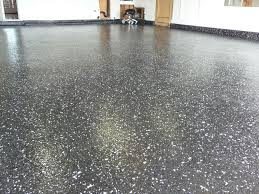Epoxy flooring has gained immense popularity in recent years due to its durability, aesthetic appeal, and ease of maintenance. Whether you are considering installing epoxy flooring in your home, garage, or commercial space, it's crucial to know several important considerations before embarking on the installation process. By addressing these factors beforehand, you can ensure a successful Greenside Epoxy floor installation that meets your specific requirements and provides long-lasting satisfaction.
Surface Preparation
Proper surface preparation is the foundation for a
successful epoxy floor installation. The existing floor should be thoroughly
cleaned, free of any dirt, grease, oil, or other contaminants that could hinder
adhesion. Depending on the condition of the surface, it may require grinding,
shot blasting, or acid etching to achieve the ideal substrate for epoxy
application. Neglecting proper surface preparation can result in poor adhesion
and premature coating failure.
Moisture and humidity
Moisture-related issues can significantly impact the
performance and longevity of an epoxy floor. Before installation, conducting a
moisture test to determine if the concrete slab or substrate is prone to
moisture-related problems is crucial. High moisture levels can cause
blistering, bubbling, or delamination of the Greenside Epoxy coating.
Installing a vapor barrier or moisture-mitigating system may be necessary to
prevent such issues in areas with excessive moisture or high humidity.
Environmental factors
Consider the environmental conditions where the epoxy
floor will be installed. Extreme temperatures, UV exposure, chemical spills,
heavy foot traffic, or vehicular movement can all affect the performance and
durability of the epoxy coating. Depending on the specific requirements,
additional protective topcoats, UV inhibitors, or chemical-resistant additives
may be necessary to enhance the epoxy floor's resilience and longevity.
Purpose and Usage
Before installing a Greenside Epoxy floor,
defining its purpose and anticipated usage is crucial. Different epoxy
formulations are available, each designed for specific applications. For
instance, decorative epoxy coatings used in residential settings may differ
from industrial-grade epoxy floors used in warehouses or automotive shops.
Clearly defining the purpose of the floor will help determine the appropriate
epoxy system, thickness, and finish required for optimal performance.
Maintenance and cleaning
One of the advantages of epoxy flooring is its easy
maintenance. However, it's essential to understand the recommended cleaning
methods and maintenance requirements specific to your epoxy floor. Some epoxy
coatings may require periodic reapplication of topcoats or specialized cleaning
products. Understanding the maintenance procedures beforehand will help you
plan for your epoxy floor's long-term care and upkeep.
The conclusion
Installing the Greenside Epoxy floor
can be an excellent investment, providing a durable, visually appealing,
low-maintenance surface. However, it is essential to consider several factors
before embarking on the installation process. Proper surface preparation,
moisture testing, consideration of environmental factors, defining the purpose
of the floor, and understanding the maintenance requirements are all crucial
steps for a successful epoxy floor installation. By paying attention to these
considerations, you can ensure that your epoxy floor meets your expectations
and delivers long-lasting performance.

No comments:
Post a Comment